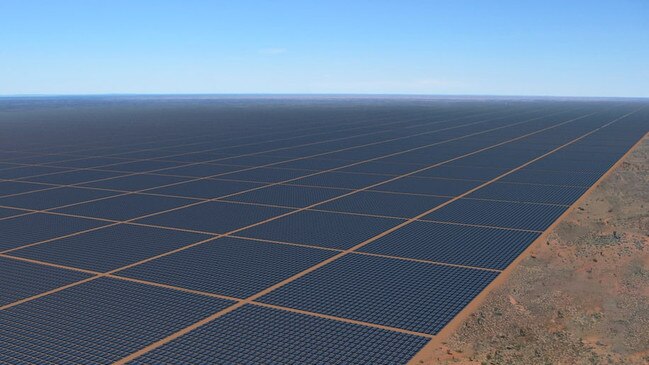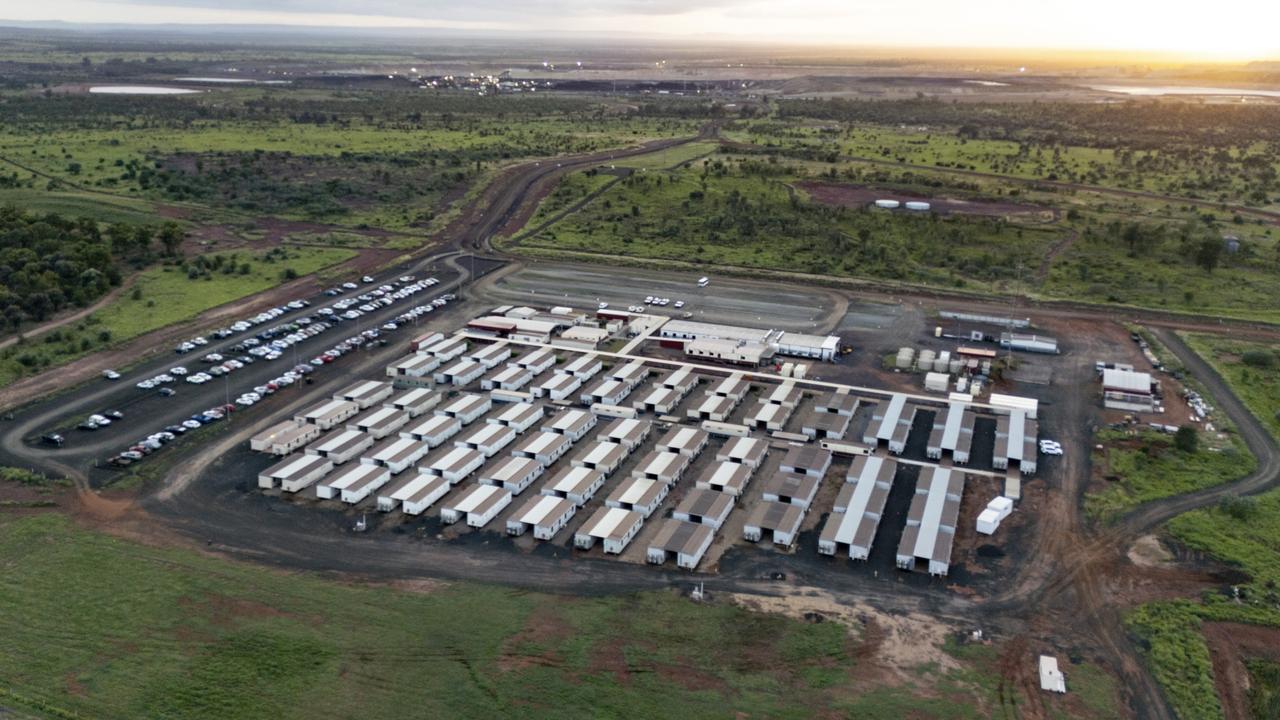Indonesia greenlights $30bn Aussie plan to power Singapore
Sun Cable’s Australia-Asia PowerLink has the go-ahead from Indonesia to provide up to 15 per cent of Singapore’s electricity needs from 2028.

Indonesia has approved the route of Sun Cable’s Australia-Asia PowerLink through its territorial waters, allowing one of the world’s largest solar farms in the Northern Territory to provide up to 15 per cent of Singapore’s electricity needs from 2028.
In a major coup for the $30bn Australian project, which is backed by Scott Morrison, Indonesia’s Coordinating Minister for Maritime Affairs and Investment Luhut Binsar Pandjaitan on Thursday announced he had recommended the route of the transmission cables through Indonesian waters.
The Indonesian government has also approved the subsea survey permit and welcomed Sun Cable’s investment in the country, which will support local jobs and manufacturing during construction and operation.
The Sun Cable project at Elliott, which is estimated to deliver carbon emissions abatement of around 8.6 million tonnes per year, will help power Darwin and Singapore. It includes the world’s largest battery and a 4200km undersea high voltage direct current cable system from Darwin to Singapore, the longest in the world.
During his visit to Singapore in June, Mr Morrison directly raised the Sun Cable project with Prime Minister Lee Hsien Loong, which he said could “see homes powered here … from solar panels in Australia”.
The project, backed by billionaire investors Mike Cannon-Brookes and Andrew Forrest, is expected to be promoted by Australia ahead of the United Nations Climate Change Conference in November to illustrate the importance of ASEAN partnerships in reducing emissions in the Indo-Pacific region. The Australian understands similar projects in Northern Australia connecting with other nations in the region are likely in coming years.
Trade Minister Dan Tehan will head to Jakarta next Tuesday to discuss advancement of the Indonesian manufacturing sector.
The Sun Cable decision comes after the Prime Minister last week announced Australia would build a fleet of nuclear submarines. Mr Morrison spoke with Indonesian President Joko Widodo this week to assure him Australia would maintain its obligations under the nuclear non-proliferation treaty and that the AUKUS military pact would support stability in the Indo-Pacific.
The AAPowerLink, expected to reduce Singapore’s emissions by 6 million tonnes per year and help the country meet its 2030 targets, was a prominent addition in Australia’s infrastructure priority list released in February.
The project will support more than $8bn of direct investment and generate up to $2bn in exports per year, creating more than 1500 jobs during construction, 350 operational jobs and 12,000 indirect jobs. It will start supplying energy to Darwin in 2026 and Singapore from 2027.
Sun Cable chief executive David Griffin said “we want this world-leading project to create a step-change in the Indo-Pacific’s capability to achieve net zero ambitions and economic growth sustained by renewable energy”.
Sun Cable will work with Indonesian authorities during and following construction of the AAPowerLink. They have already engaged Indonesian firms during the planning, engineering and survey phase and would help the country develop its own battery manufacturing industry.
Sun Cable will also base its maritime repair and maintenance base in Indonesia, featuring one of the world’s largest cable laying vessels.
Mr Cannon-Brookes, the Atlassian co-founder and chief executive, said Australia could become a “renewable energy superpower”.
“We can and should tap into our solar resources that could power the world five times over,” Mr Cannon-Brookes said.
Mr Forrest said decarbonising the planet was “a challenge all people and all nations must rise to”.
“But it is action, not words that are required. I commend Minister Luhut’s leadership, strong action towards this goal,” he said.
Australia’s Ambassador to Indonesia, Penny Williams, praised the Indonesian government for its support and said “Australia believes in a technology-driven approach to combating climate change”.




To join the conversation, please log in. Don't have an account? Register
Join the conversation, you are commenting as Logout